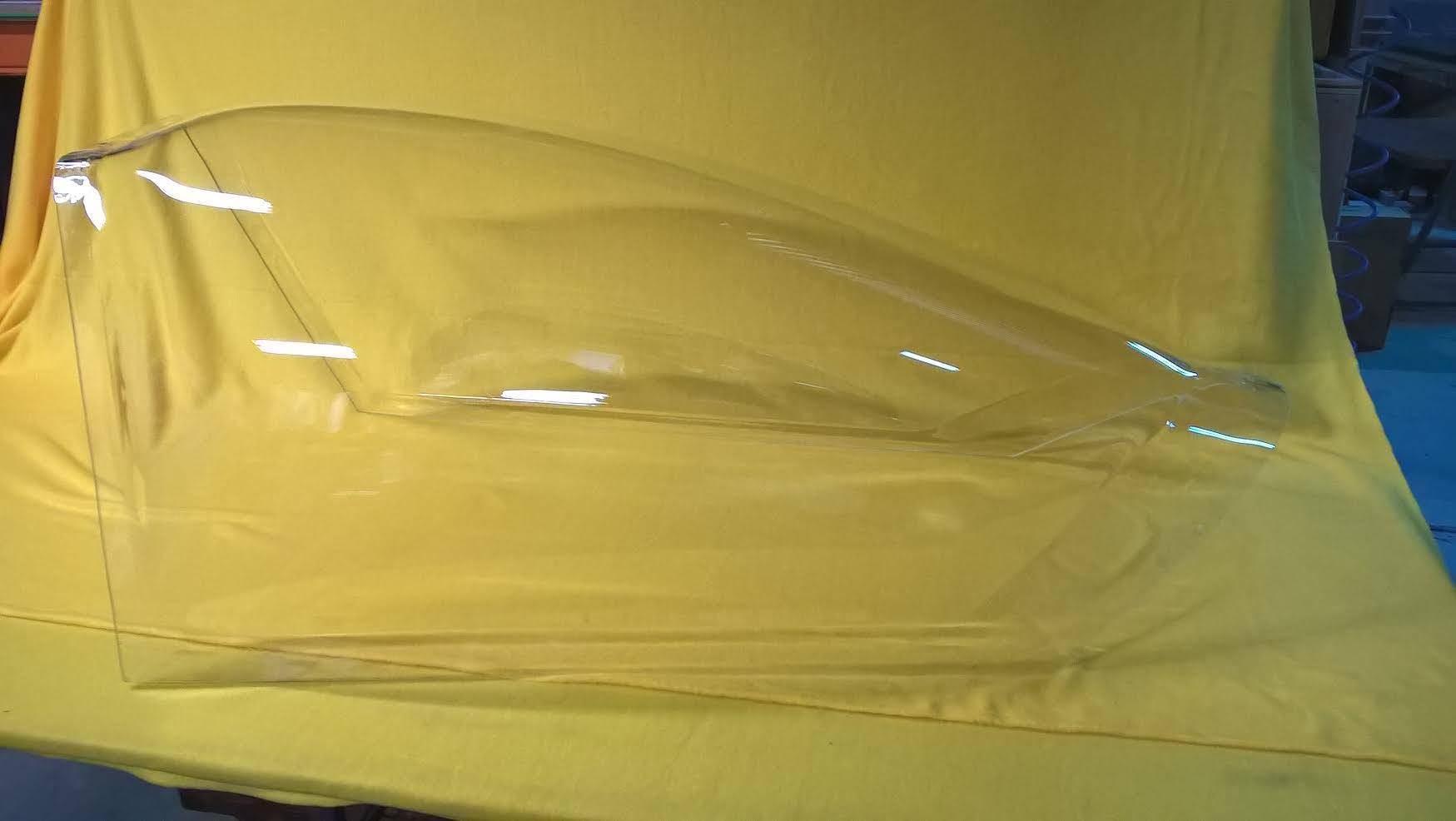

Butcher Bird Repairs
by Phil Buckley
The owner of Focke-Wulf Fw 190A-8 wk.nr. 173056, based in Albury, Australia, has given WarbirdsNews a recent progress update on the aircraft’s return to flight. As we learned earlier this year, the project suffered a setback when the fighter’s canopy malfunctioned during early testing (thankfully while the aircraft was on the ground). Instead of rolling back along the rails to the open locked positon, the canopy continued sliding until it came off the aircraft and fell to the ground, breaking the perspex and also damaging the frame.

This particular canopy design was of the blown hood style, developed later in the war to accommodate taller pilots. Raptor Aviation has spent the last few months searching for a suitable way to repair the damage. Sourcing the appropriate canopy perspex was a challenging task, and involved looking to four different countries for a supplier able to form it into the appropriate shape at an economical price. Luckily they eventually found a company in Australia that could make the appropriate mould. As of this month (September, 2016), we can report that the canopy frame is getting rebuilt in Victoria. Once the perspex supplier is ready, it will then be a matter of marrying the two items together in Victoria, before sending the completed canopy back up to Albury for refit on the aircraft. If the canopy and frame don’t match up properly at Albury, then the repair team may consider reverting back to the original, square-sided canopy, which would be far simpler to manufacture. The only drawback to this original, smaller canopy design, is the reduction in pilot headroom, which might be a problem requiring modifications to the pilot’s seat/seat rack. Raptor Aviation has test-fitted the 6-foot tall pilot sitting on the parachute and wearing his helmet. They found that they could close the canopy, but the clearance was extremely tight and restricted the pilot’s head from turning adequately. So, in all truth, they really do need the blown hood canopy to be fitted to accommodate the pilot.


While this is a brief update, we do hope to be able report in our next piece that the Fw 190 has flown and is back to flight testing. WarbirdsNews wishes to thank Raptor Aviation for their insight into their ex-Luftwaffe warbird. WarbirdsNews also wishes to thank Phil Buckley for his unstinting help in bringing us news from Australia. You should check out his site Down Under Aviation News, or DUAN for short. Thanks Phil!
Richard Mallory Allnutt's aviation passion ignited at the 1974 Farnborough Airshow. Raised in 1970s Britain, he was immersed in WWII aviation lore. Moving to Washington DC, he frequented the Smithsonian’s National Air & Space Museum, meeting aviation legends.
After grad school, Richard worked for Lockheed-Martin but stayed devoted to aviation, volunteering at museums and honing his photography skills. In 2013, he became the founding editor of Warbirds News, now Vintage Aviation News. With around 800 articles written, he focuses on supporting grassroots aviation groups.
Richard values the connections made in the aviation community and is proud to help grow Vintage Aviation News.


Always tough to find/make parts for older aircraft. Best of luck!
Outstanding news! An original 190, going to fly soon? Had no idea another was near ready to go. I am docent at museum in So. California. The 190 and109 seem to be the top warbirds of interest to museum patrons now. We have one ‘flyer’ in Washington state, but believe it is only one that is an original! Interesting account on canopy problem. Shows just how difficult and expensive these old crates are to keep airworthy! Thanks for info and good luck!
It will be great to see it flying again. It did fly in the States with its previous owner, but that was some time ago. While it is based on the identity of a WWII airframe, we should note that there are a good number Flugwerk-made components in the airframe too. This is not to take anything away from the aircraft, as it’s a beauty, but I wouldn’t want people to get the impression that it was as near the originality of the FHC example – which I recall contains about 85% of the original airframe!
Finally a Luftwaffe aircraft in Australia its been a long wait, hopefully she takes to the air soon and the public can enjoy this wonderful aircraft now all we need is a 109 but that’s probably asking too much.
can anyone tell me the US identity of the Flug Werk airframe used in the conversion?
Many thanks,
Alastair
The engine cowling doesn’t seem so accurate.
The engine cowling near the spinner hub doesn’t seem so accurate.
Looking for person with experience in FW 190 wing repair.